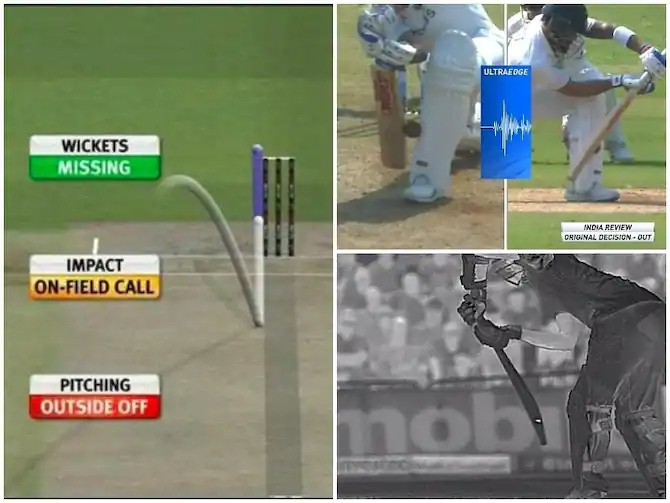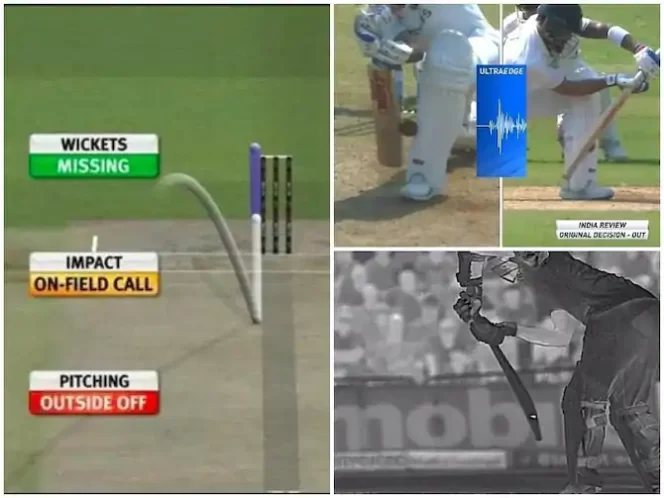Cricket is a game of skill, strategy and luck. But sometimes, human errors can affect the outcome of a match. That’s why the Decision Review System (DRS) was introduced in cricket to improve the accuracy of decision-making during matches. The DRS is a technology-based system that allows either team to challenge the on-field umpire’s decision and get it reviewed by the third umpire using various technologies. In this blog post, we will explain how DRS in cricket works and how the cameras are calibrated before the game to get the snick and prediction correct.

The Decision Review System (DRS) is a technology-based process for assisting the match officials with their decision-making in cricket. The system allows on-field umpires to consult with the third umpire (an Umpire Review) and players to request that the third umpire consider a decision of the on-field umpires (a Player Review). To request a DRS review, either the captain of the fielding team or the batsman in the middle must signal ‘T’ with their hands within a 15-second window after the on-field umpire’s decision. The query is then sent to the third, or the TV, umpire. However, if the time limit is exceeded, the on-field umpire has the right to deny the review request
What is DRS in Cricket?
The DRS stands for Decision Review System. DRS is a system that enables either team to request a review of an on-field umpire’s decision. The DRS was first used in Test cricket in 2008 and has since been implemented in limited-overs formats as well. The purpose of the DRS is to assist on-field umpires in making transparent decisions. Also to remove any errors that they might have committed when giving their initial verdict.
Each team is given a certain number of reviews per innings, depending on the format of the game.
Test Cricket: Three unsuccessful player reviews per innings
ODIs: Two reviews per innings.
T20Is: One review per innings.
The DRS can be used for three types of decisions: whether the batsman is out or not out, whether the ball has hit the bat or pad, and whether the ball would have hit the stumps or not.
DRS Technologies used
The DRS uses various technologies to help the third umpire make a more accurate decision, such as:
- Ball-tracking: This technology tracks the path of the ball from the point of release to the point of impact and predicts what it would have done after hitting the batsman or pad. It uses cameras and software such as Hawk-Eye or Virtual Eye to create a visual representation of the ball’s trajectory.
- Sound analysis: This technology detects small sounds made as the ball hits the bat or pad using microphones placed around the ground. It uses software such as Real Time Snicko to display a waveform of the sound on a screen.
- Infra-red imaging: This technology detects temperature changes as the ball hits the bat or pad using cameras that capture infra-red images. It uses software such as Hot Spot to show a white spot where the ball has made contact with the bat or pad.
How are the Cameras Calibrated?
The cameras used for DRS are calibrated before each game to ensure that they capture accurate images and data. The calibration process involves setting up the cameras at specific locations and angles around the ground, adjusting their focus and zoom levels, and synchronizing their clocks and frames.
It also involves testing the cameras using different scenarios. Example: different types of deliveries, hitting different parts of the bat or pad, and simulating different types of dismissals. The calibration process ensures that the cameras are ready to capture any eventuality that might occur during a match.
The entire process is done by a team of experts from the technology providers, such as Hawk-Eye or Virtual Eye. These teams work closely with the ICC and the host broadcaster. The calibration process takes about an hour before each game and is checked again during breaks.
Conclusion
The DRS in cricket is a system that aims to improve the accuracy and fairness of decision-making during matches. It uses various technologies to assist the third umpire in reviewing an on-field umpire’s decision upon request from either team. The cameras used for DRS are calibrated before each game to ensure that they capture accurate images and data.
The DRS in cricket has been a controversial topic since its inception. There are some teams and players supporting it and some opposing it. However, it has also been a useful tool for reducing errors and enhancing transparency in cricket.












No Sign-up. Play Directly.